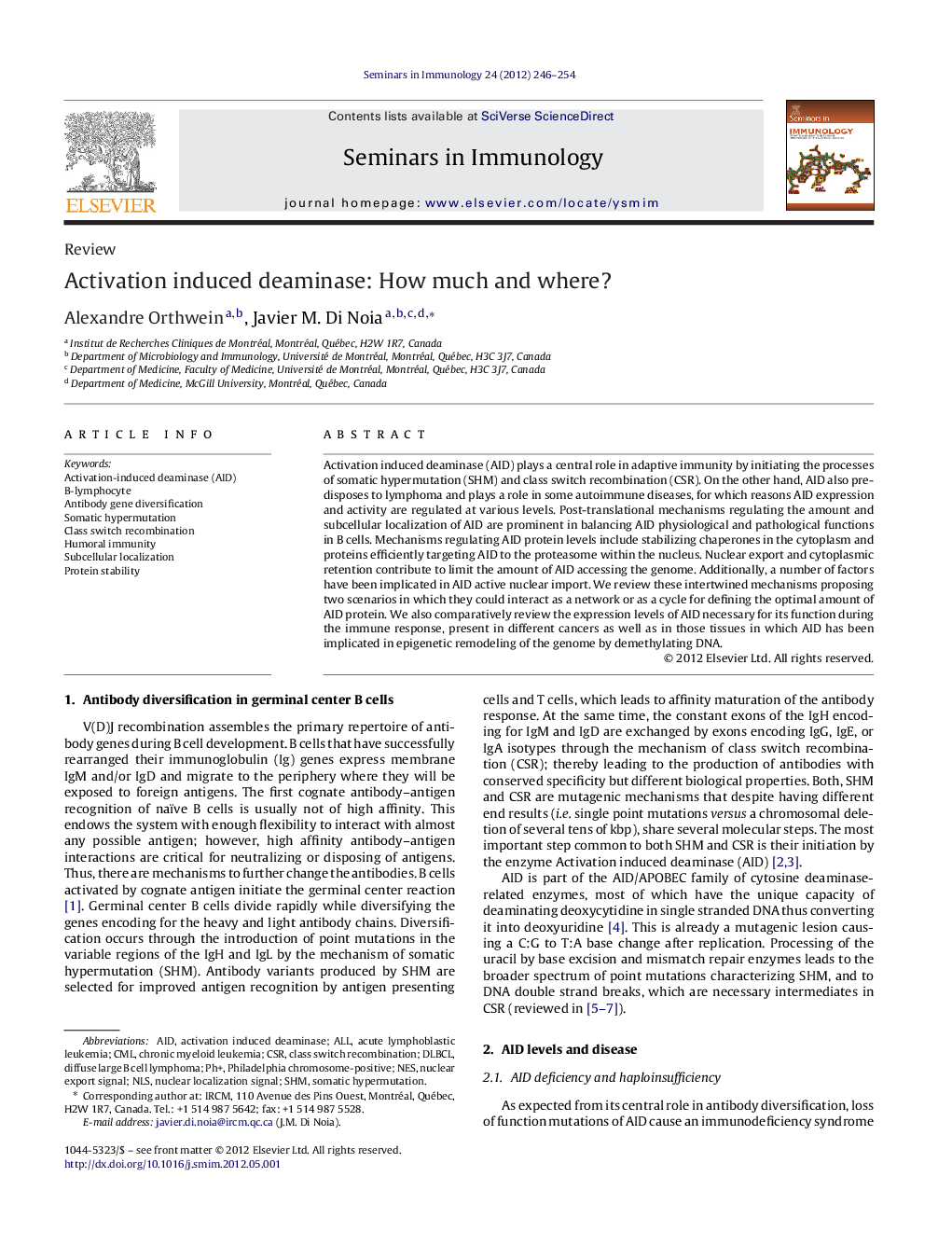| Article ID | Journal | Published Year | Pages | File Type |
|---|---|---|---|---|
| 3391502 | Seminars in Immunology | 2012 | 9 Pages |
Activation induced deaminase (AID) plays a central role in adaptive immunity by initiating the processes of somatic hypermutation (SHM) and class switch recombination (CSR). On the other hand, AID also predisposes to lymphoma and plays a role in some autoimmune diseases, for which reasons AID expression and activity are regulated at various levels. Post-translational mechanisms regulating the amount and subcellular localization of AID are prominent in balancing AID physiological and pathological functions in B cells. Mechanisms regulating AID protein levels include stabilizing chaperones in the cytoplasm and proteins efficiently targeting AID to the proteasome within the nucleus. Nuclear export and cytoplasmic retention contribute to limit the amount of AID accessing the genome. Additionally, a number of factors have been implicated in AID active nuclear import. We review these intertwined mechanisms proposing two scenarios in which they could interact as a network or as a cycle for defining the optimal amount of AID protein. We also comparatively review the expression levels of AID necessary for its function during the immune response, present in different cancers as well as in those tissues in which AID has been implicated in epigenetic remodeling of the genome by demethylating DNA.
► AID protein levels limit antibody diversification, off-target mutations and cancer. ► AID subcellular localization and stability regulation define the optimal AID levels. ► These regulatory mechanisms could operate redundantly in a complex network. ► AID is expressed in cancer and normal non-B cells at very different levels. ► Whether AID levels are regulated equally in these versus normal B cells is unclear.
